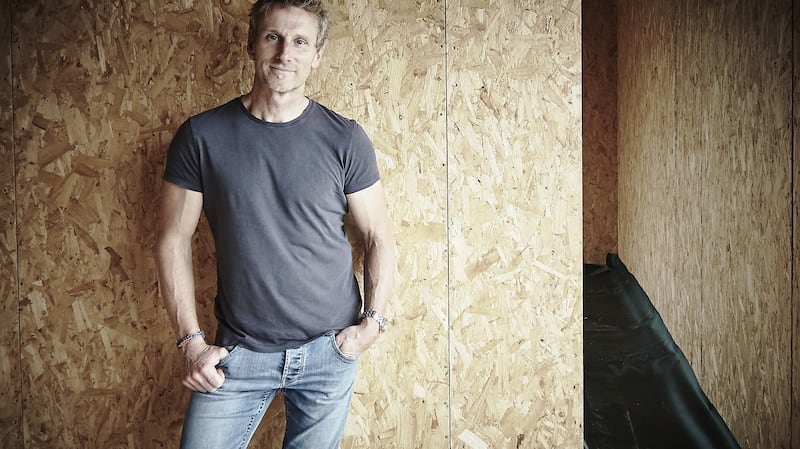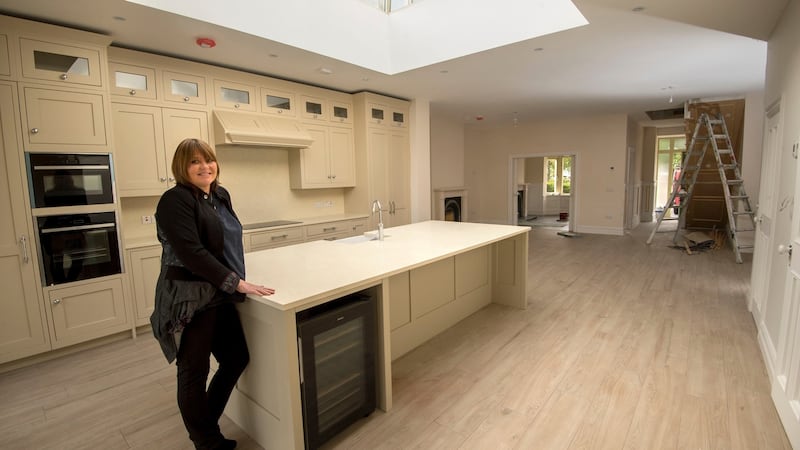'My advice would be to start your house by designing it to the hilt, so that you know exactly what everything costs," says Mike Mills, who, together with his wife, Anna, returned to Ireland from the UK to build a home outside Navan, Co Meath, in August 2014.
“Everything we did was about driving costs down so that we would not be tied to a big mortgage,” he says.
Part of this was to build a house that would be as cheap as possible to run, thanks to a passive-house standard of energy efficiency.


The end result of the couple’s 11-month build is a 187sq m (2,000sq ft) home that cost just €150,000, with annual heating and hot-water bills of just €260.
The hardest part of the project was holding on to his vision, Mills says. “Be prepared for a lot of people to tell you ‘You can’t do that’. If you are prepared to think outside the box, you can. If there’s one expression I’ve grown to hate from contractors, it’s ‘but we’ve always done it this way’. For example, we wanted a corrugated tin roof, exactly as you’d find on a farm building. People would ask us if it was because we couldn’t afford slates. My answer was that I could afford slates if I wanted them, but I was choosing to spend the €7,000 they would cost me on something else.”
Inspired by the UK architect Piers Taylor, who specialises in the innovative use of materials, Mills now reckons mass-produced building materials are unnecessarily expensive, “but people choose them because they are afraid or unsure about doing something different to everybody else”.
Project managing the build was challenging, but he’d recommend it. “It was stressful,” says Mills. “I’d never done it before, and because I work for myself I was trying to work as well. So there were a lot of long days and late nights, doing everything from mixing concrete to making tea. But I’d say to anyone thinking of reducing costs that it’s not that hard to project manage if you are prepared to read up on it, break it down into trades, and deal with each one individually.”
The only mistake he made was not getting the landscaping done at the same time, he says, “because I’m still looking at it”. But he has learned not to dwell on such things. Building is, he says, “a series of decisions and you have to accept that you made the best decision at any time, given all that you knew. Because, otherwise, hindsight is a touchy subject.”
Having already built one home in west Cork, Andrew Bradley knew exactly what he wanted second time around. In 1999 Bradley, a photographer, and his wife, Marie, a stylist, built a large timber-framed, timber-clad property just outside Clonakilty.
Inspired by the home the French designer Philippe Starck built for his own family, Bradley worked with sustainable-homes specialist Cygnum to bring that first project to fruition.
But while the original aim was to have a two-storey home where the top storey was smaller than the ground floor, in the end it proved more cost-effective to build both storeys the same size. Though sensible, it was a compromise that niggled at Bradley.
This time around he has a very clear vision of what he wants and is holding true to it. Using Cygnum’s Precision 300 range with external block leaf, the highly energy-efficient house is based on the Irish vernacular farmhouse with corrugated roof.
“Only the window dimensions, technology and material selection bring the house into the 21st century,” Bradley says. “We wanted something to sit in the landscape in a peaceful, quiet way, rather than a big new-build statement.”
Heating and hot water comes by way of a geothermal system and heat pump.
“We’re going from something very exhibitionist to something very understated, a simple style with floating polished concrete floors, Kilkenny limestone cladding in the bathroom, and white rendered exteriors,” Bradley says.
The 162sq m (1,750sq ft) one-storey house has two bedrooms and two studies. Having broken ground in May, the build has progressed speedily.
“The thing about self-building is that you almost always end up running out of money,” Bradley says. “We did last time around, which meant we ended up not getting things like the fittings we wanted. This time around, we started by accumulating those first. I’m surrounded by boxes of things like sanitary ware, taps and shower systems.”
The house's lighting system is on order from Davide Groppi in Italy. Don't be afraid of bespoke, Bradley advises. "It's not so expensive as you might think . . . You just have to put in the forethought and think about eight weeks ahead, because of the lead times."
Knowing what you want is central to getting it. Liz Cullen and her family spent much of the past two decades in Egypt, South Africa and the Middle East.
Last year they bought a semi-detached family home on Templeville Road, Templeogue, Dublin. Working with the building company Construction Project Design, they renovated extensively.
“The only walls left standing were the ones attached to the house next door, as we built out and up,” says Cullen. The result was an increase in floor space from 167 sq m (1,798sq ft) to 232sq m (2,497sq ft). It feels even bigger.
“One of the benefits of having lived in so many houses over the years is that you get to know exactly what you like in a house, and what works for your family.
“I wanted a sense of light and space, and one of the ways we got that was to dig down into the ground to give the rooms extra height. We had lots of other ideas we wanted to incorporate too, such as designing the house in such a way as to take a lot of the landing space back into the bedrooms,” says Cullen.
The result was a bigger house with bigger rooms, and each of the four bedrooms now has its own bathroom. The open-plan layout downstairs showcases a custom-made kitchen from Fearon Brothers in Newry.
While renovation work this extensive can be fraught, Cullen took the pressure off herself by renting somewhere nice in the meantime “so there was no sense of a rush to get in”.
For her, though, the most important factor in any build is location.
“It just feels so great to be living in a place where I can walk down to the shops and just bump into cousins and family and friends,” she says. “That hasn’t happened to me for years.”
Learning from previous mistakes helped Maria Kennedy land her dream home. With her husband, John, she bought their current home in Terenure in 2013. The big draw was light.
“Our former home was north-facing and dark,” she says. “It’s something you don’t even think about until you end up living in one. This one was south-facing, and that was the clincher.”
The couple spent a full year renovating, including groundworks to build up the ventilation space underneath the floorboards, insulation of all walls and an attic conversion. The result is a sizable six-bedroom family home.
The biggest transformation was the kitchen, which extends out into the back garden and has glass on three sides plus a sunroof. Along the way was a serious learning curve.
“The biggest mishap was a geothermal heating system that required a very expensive hole to be dug in the garden, only to find there were all sorts of neighbourhood pipes down there that couldn’t be touched,” Kennedy says.
“In the end, we went for a very expensive heating system, based around an air pump, which was meant to pay for itself over time, but I’m yet to be convinced of it.
“Yes, it means we have hot water all the time and I don’t have to think about it, which is great, but our bills are still huge. Then again, I’ve five kids.”
It is, however, the couple’s fourth house and “our forever home”, she says.
For others looking for that same sense of satisfaction, the key is to speak up.
“Don’t be afraid to change your mind while the builders are in. That is the time to do it because it’s cheaper than doing it later. There are still a couple of things I wish I had done, like put an additional window. I might just do it yet, to get more light.”












